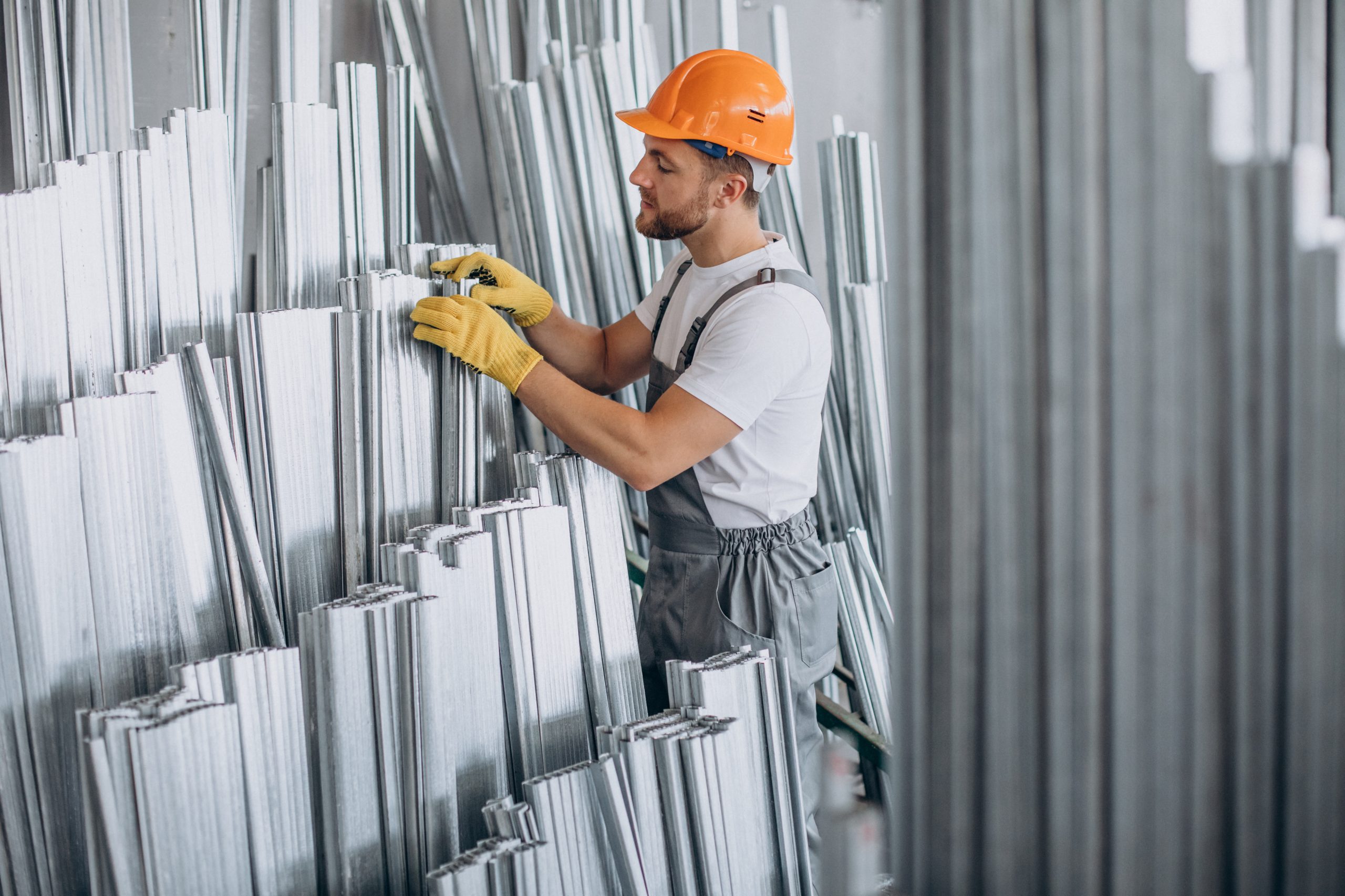Changes are a part of our daily life. Can you ever realise how fast our surroundings are changing in this busy world? I know that you never did that. But once you move your head from right to left, you can watch a building and skyscrapers here and there.
It sounds crazy to realise how fast time flies and how things progress. In developing countries like Malaysia, construction plays a major role.
During the Era of this development in Malaysia, builders chose aluminium pipes because of their strength, light weight, and flexibility. These pipes form part of a larger group often called Aluminium Profile & Accessories, which includes structural and supporting elements for all types of projects. Engineers and builders can shape, fix, and reuse them easily.
Why Aluminium Pipes Stand Out
Strength Without Weight
Aluminium pipes keep structures strong but don’t weigh them down. This helps reduce strain on frameworks. Workers can also carry and install them with less effort. Since lighter materials lower transport and labour costs, project savings add up quickly.
Resistance to Rust and Wear
Unlike iron or steel, aluminium naturally resists corrosion. A thin oxide layer protects it from rust, even in damp or outdoor areas. This reduces long-term wear, cutting repair and upkeep costs.
Builders often face rough weather or factory settings. Aluminium pipes stay clean and shiny, making them ideal for both looks and function.
Simple Customisation
Another reason aluminium leads the field is its flexibility. You can cut, bend, drill, or connect it without damaging the pipe. This lets you build systems that match specific needs without custom orders or costly tools.
Factory layouts, display stands, or moving racks, aluminium allows for tailored design. You can switch components or adjust the frame whenever your needs shift.
How Aluminium Pipes Improve Construction
Better Joint Systems
Modern pipe systems use smart joints that click or lock into place. These setups speed up assembly while keeping parts steady. Workers can connect pipes into different shapes — square, cross, or “L” shapes — with no welding or glue.
Because of this, aluminium pipe in Malaysia systems often appear in factories where assembly lines need quick change or safe handling. From storage units to packing tables, the same joint system fits all.
Eco-Friendly and Reusable
Nowadays construction world values waste-free work. Aluminium pipes fit this trend well. You can take the frame apart and reuse parts many times. Since no harmful glue or welding is needed, waste stays low.
Once a project ends or moves, pipes can become part of a new structure. This reuse cuts waste and lowers costs across multiple projects.
Safer Workspaces
Smooth, rounded aluminium pipes make safer edges than sharp steel or plastic. For a busy workshops or storage areas, sharp corners raise the chance of injury. Aluminium systems often come with add-ons like rubber feet, non-slip covers, or corner guards for better safety.
Because they support safety rules without slowing work, they help build better work environments.
Features in Use
Pipe Racking Systems
Pipe racking systems are common in factories and warehouses. Here, aluminium pipes hold trays, bins, or tools at reachable heights. These racks can grow or shrink based on the floor plan. Teams can slide rollers into the frame for fast item flow.
A typical setup might include vertical pipes, corner joints, and rollers. This layout supports boxes moving along a track, ideal for assembly or sorting lines.
Adjustable Workstations
Aluminium frames help form mobile workstations that fit changing needs. One day, the table holds tools; next week it holds samples or parts. Workers can shift shelf height or add extensions.
This type of system cuts down on fixed furniture. Instead of locking money into heavy units, builders invest in a frame that adjusts over time.
Conveyor Frames
Even moving items between stations gets simpler with aluminium. Frames made of aluminium pipes hold rollers, belts, or trays. They stay light but strong, even under full load.
The structure handles impact well and offers long service. If a belt or roller breaks, swapping it takes minutes without taking apart the whole frame.
Choosing the Right Aluminium Pipe
Know the Size You Need
Pipe diameter plays a big part in performance. Thicker pipes support more weight but cost more. For light setups, slim pipes keep things light and low-priced. Builders should balance strength with cost.
Check for Add-On Parts
Not all aluminium pipes work the same. Good systems offer matching parts: end caps, joints, rollers, and corner guards. A pipe with full accessories saves time and prevents mix-ups during setup.
Plan for Future Changes
Think beyond your current setup. A modular system grows with you. You might start with five racks, but later need ten. Aluminium systems expand fast with no redesign.
Innovative Uses of Aluminium Pipes in Modern Architecture in Malaysia
Aluminium pipes are reshaping how architects design buildings. Their strength and lightness support both beauty and function. These pipes appear in more than frames — they shape façades, shading, and interiors. Their clean finish fits modern, industrial, and minimal styles alike.
- Used in curtain walls, facades, and shading systems
- Allows slim frames for large glass panels
- Corrosion-resistant, ideal for coastal buildings
- Supports creative shapes and custom finishes
- Enables fast, clean installation with fewer tools
How Aluminium Pipe Systems Improve Industrial Automation
Aluminium pipe frameworks support the growing demand for flexible automation in factories. Their modular nature allows systems to change without redesign. From material flow to machine stations, these pipes simplify setup and reconfiguration.
- Frames support conveyors, sensors, and workstations.
- Pipes enable the smooth integration of robotic arms.
- Easy to move or adjust during layout changes
- Non-magnetic, ideal for sensitive electronic environments
- Works with roller tracks, counters, and light displays
Benefits Over Other Materials
| Feature | Aluminium | Steel | PVC |
| Weight | Very light | Heavy | Light |
| Strength | High | Very high | Low |
| Rust Resistance | Excellent | Poor | Good |
| Customisability | Very high | Medium | Medium |
| Appearance | Clean and bright | Dull | Basic |
| Eco-Friendliness | Reusable | Recyclable | Less recyclable |
Aluminium ranks high across nearly all useful traits. It may cost more up front than PVC, but savings appear over time.
Maintenance Tips for Long-Lasting Aluminium Pipe Structures
Aluminium pipe & joint systems require low upkeep, but a few steps keep them performing well for years. Regular checks help spot loose joints or surface wear before they grow into bigger issues.
- Wipe surfaces with a dry cloth to prevent dust buildup.
- Check joints for tightness every 6 months.
- Replace worn rollers or grips early.y
- Use soft brushes for cleaning without scratching.
- Store spare parts to replace damaged pieces quickly
Final Thought
Using Aluminium pipe in Malaysia is the best option for construction and factory needs, improving your design, cutting costs, and saving time. These pipes form sturdy, rust-free, and reusable frameworks that builders rely on every day.
From pipe racks to conveyor lines, the right system uses strong aluminium and smart joints for top performance. Aluminium Profile & Accessories offer versatile solutions that can be tailored to any project, further enhancing the strength and efficiency of these systems.
With so many benefits, it’s no wonder that more industries turn to aluminium frames. Simple parts, clear systems, and long life make them a smart pick. The modern builder must build fast, stay safe, and adapt often. Aluminium pipes and their accompanying profiles and accessories answer all these needs without effort.








